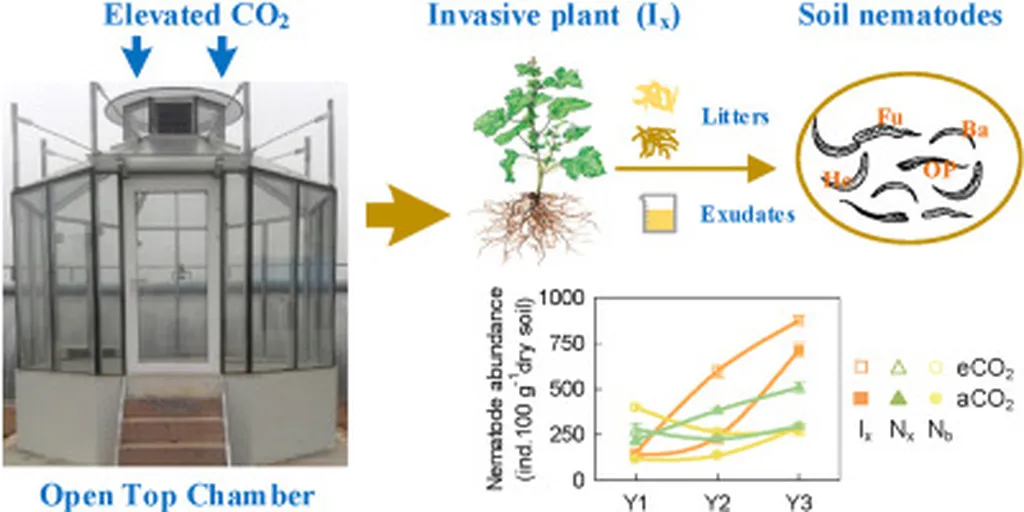In the quiet fields of Shenyang, China, a groundbreaking study is unraveling the intricate dance between invasive plants, soil nematodes, and our changing atmosphere. Dr. Xiu-Rong Lu, a researcher at the College of Land and Environment, Shenyang Agricultural University, and the Liaoning Key Laboratory for Biological Invasions and Global Changes, has been leading this exploration, shedding light on how elevated CO2 levels and invasive plants interact to affect soil health.
The study, published in the journal ‘Plant Diversity’ (translated as ‘Flora Plantarum’), focused on the invasive alien plant Xanthium strumarium, commonly known as cocklebur, and its impact on soil nematodes under different atmospheric CO2 concentrations. Nematodes, tiny but crucial components of soil biota, play a significant role in nutrient cycling and soil health. Understanding their response to global change factors is vital for maintaining productive and sustainable ecosystems.
Dr. Lu and her team cultivated cocklebur and two related native plants under both ambient and elevated CO2 conditions over three consecutive years. They found that the abundance of total soil nematodes and the dominant trophic group, herbivores, were significantly affected by plant species and CO2 concentration, with these effects varying depending on the duration of the experiment.
“Under ambient CO2 conditions, both invasive and native species increased the total nematode abundance and that of the dominant trophic group with increasing experimental duration,” Dr. Lu explained. “However, the amplitude of the increase was greater under the invader relative to the natives.”
The study also revealed that elevated CO2 increased total nematode abundance in the second year and that of the dominant trophic group in the third year under the invader, but not under the natives. This suggests that elevated CO2 could exacerbate the effects of invasive plants on soil nematodes by increasing their abundance.
The research also highlighted the significant role of root litter in influencing soil nematode abundance, more so than leaf litter and root exudates. This finding could have important implications for soil management practices, particularly in areas affected by invasive plants.
The commercial impacts of this research are substantial, especially for the energy sector. Healthy soils are crucial for sustainable bioenergy production, and understanding how invasive plants and elevated CO2 levels affect soil health can help in developing strategies to mitigate these impacts. Moreover, the findings could inform policies aimed at controlling invasive species and managing carbon sequestration projects.
Dr. Lu’s work underscores the complexity of ecological interactions and the need for long-term studies to understand the full extent of global change factors. As she puts it, “Our study indicates that the effects of elevated CO2 on invasive plants and soil nematodes vary with the duration of the treatment. This underscores the importance of considering temporal dynamics in ecological studies.”
This research not only advances our understanding of soil ecology but also provides valuable insights for developing strategies to manage invasive species and mitigate the impacts of elevated CO2 levels. As we grapple with the challenges of a changing climate, studies like this one are crucial for shaping a sustainable future.

